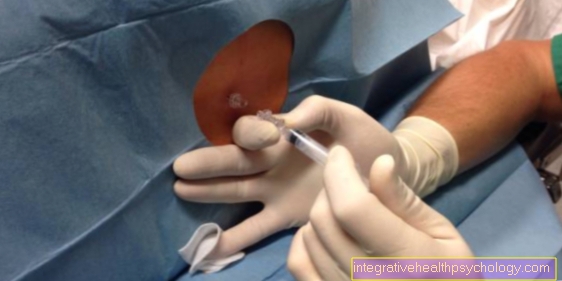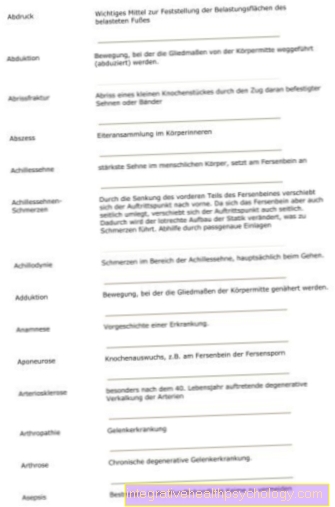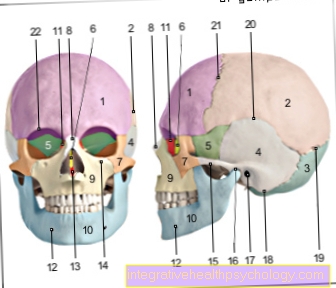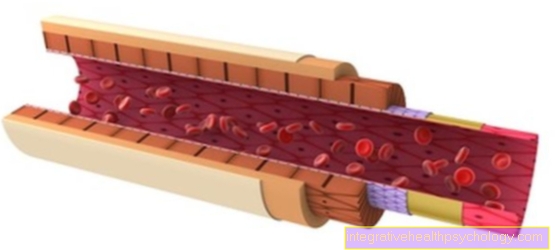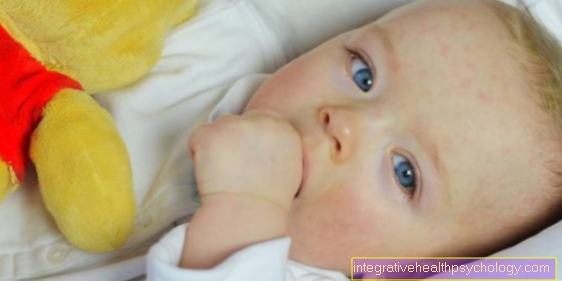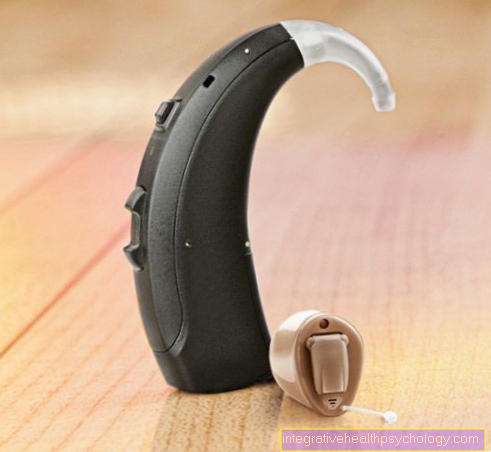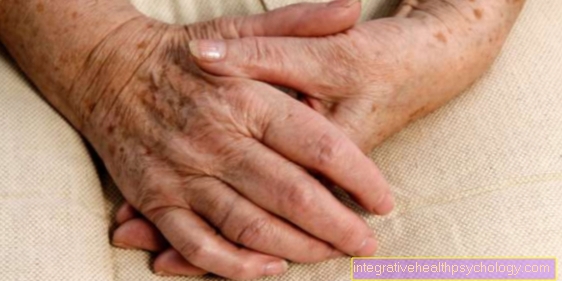Breathe in contractions
introduction
When preparing mentally and physically for childbirth, expectant mothers often ask themselves how they can best cope with the forthcoming labor. The subject of correct breathing or breathing technique during labor usually comes up. One often speaks of “breathing in labor”.
Various breathing techniques can be learned, among other things, in antenatal courses, which are usually taught by experienced midwives. The following article deals with breathing during labor and answers interesting questions about the subject of “breathing in labor”. The article cannot replace an antenatal course and does not claim to be complete. If the pregnant woman's health is impaired or the pregnancy is at risk, the advice of experienced doctors and midwives should be sought for correct breathing technique.

What breathing techniques are there?
Correct breathing plays an important role in the spontaneous delivery process. The type of breathing differs in the different phases of birth.
The opening phase of childbirth is characterized by the so-called opening labor. These contractions occur rhythmically every 10 minutes and then every 2-3 minutes. They are of high intensity and require very regular breathing from the pregnant woman. At the beginning of the contraction, it is advisable to inhale deeply and slowly through your nose and exhale in a relaxed manner with your mouth open. The inhalation should be longer than the exhalation. It often helps women to accompany the exhalation with long tones such as "Oh" and "Ah". This ensures regular breathing.
Even with increasing frequency of labor at the transition between the opening phase and the expulsion phase of labor, breathing should remain as regular as possible. Panting should be avoided as this can lead to hyperventilation.
In the expulsion phase, the baby keeps pushing forward. The so-called contractions are accompanied by the greatest pain during childbirth. Often women then tend to hold their breath to push the baby out with them. However, this is a serious mistake. While this may seem like a normal instinct, be sure to breathe in and out regularly. Otherwise exhaustion and an insufficient supply of oxygen will occur more quickly. The woman should try to breathe in again at the beginning of the contraction and then breathe out easily. It can help to count a rhythm internally. Breathing is a little faster here than in the opening phase. Nevertheless, you should be careful not to pant. Exhaling with deep tones such as "Ah" and "Oh" can also help here to make breathing as regular as possible. In the postpartum phase, breathing from the opening phase can contribute to relaxation. Inhale deeply through your nose and exhale through your mouth. The inhalation is again about twice as long as the exhalation.
Read more about this:
- The correct breathing technique at birth
- The different types of labor
What position should I take?
There is no perfect position for birth. Different positions are recommended depending on the position of the child and the birth process. Often times, the woman lies on her back with her legs bent and the upper body raised. A raised upper body is very important because lying flat, the circulatory situation is poor and breathing is also more difficult. Births also take place in crouching, kneeling or quadruped positions.
The position of the birth depends on the birth process and the position of the child in the pelvis. In each position, breathing should be calm and even to facilitate the birthing process.
You may also be interested in this topic: Birth from breech position
How and where can you learn this?
Breathing techniques for childbirth can be learned most competently in antenatal courses. Such courses are usually carried out by experienced midwives and are usually also advertised in maternity clinics, so that you can get good information there.
Appointments are often flexible and depend on the size of the group. You can discuss this with the supervising midwife. You can also learn to breathe in contractions in private practice sessions with midwives. However, there is no need to attend a course to learn the correct breathing technique. Obstetric guides, brochures, and books can also provide information on correct breathing. This can then be practiced at home. Breathing is ultimately intuitive and every woman has to find her own rhythm. You should only be careful not to pant and become hectic, as this leads to exhaustion more quickly and endangers the adequate oxygen supply.
More also our article: Birth preparation course
Do you have to breathe in labor?
The expression "to breathe in labor" often sounds misleading. Labor cannot be breathed in itself. This means that the pain in labor does not go away with breathing. Rather, they can be accompanied by correct breathing. This can support the birth process well. The bottom line is that there is no specific type of breathing to learn to accompany contractions. However, breathing should or must be calm and regular, otherwise the expectant mother will be more exerted.
When should you breathe in contractions?
Labor does not only occur at birth, but also from the 20th week of pregnancy. Such sporadic contractions are also known as pregnancy contractions. They are short-lived. It is usually not necessary to breathe in these contractions, as they end again after a very short time.
However, about three to four weeks before the baby is born, more regular contractions known as lowering pains occur. They are uncoordinated and are supposed to position the child correctly. Here it can already help to accompany the contractions with regular breathing. This is also a good preparation for the actual birth. The so-called pre-labor pains occur about three to four days before the birth, which are very intense and occur every five to ten minutes shortly before the opening phase. Regular and deep breathing during the opening phase should be used here.
This topic might interest you: Exercise contractions or Premature labor
What is meant by panting?
Panting is shallow and quick breathing. This breathing was sometimes recommended by various midwives for the expulsion phase of the birth, as it was hoped for a faster birth. However, these days this type of breathing is no longer recommended because of its many disadvantages.
On the one hand, it makes the mother hectic and can lead to cramping during childbirth and, on the other hand, it promotes hyperventilation. The result is a lack of oxygen and dizziness and even loss of consciousness. Therefore, you should never cackle during childbirth.






